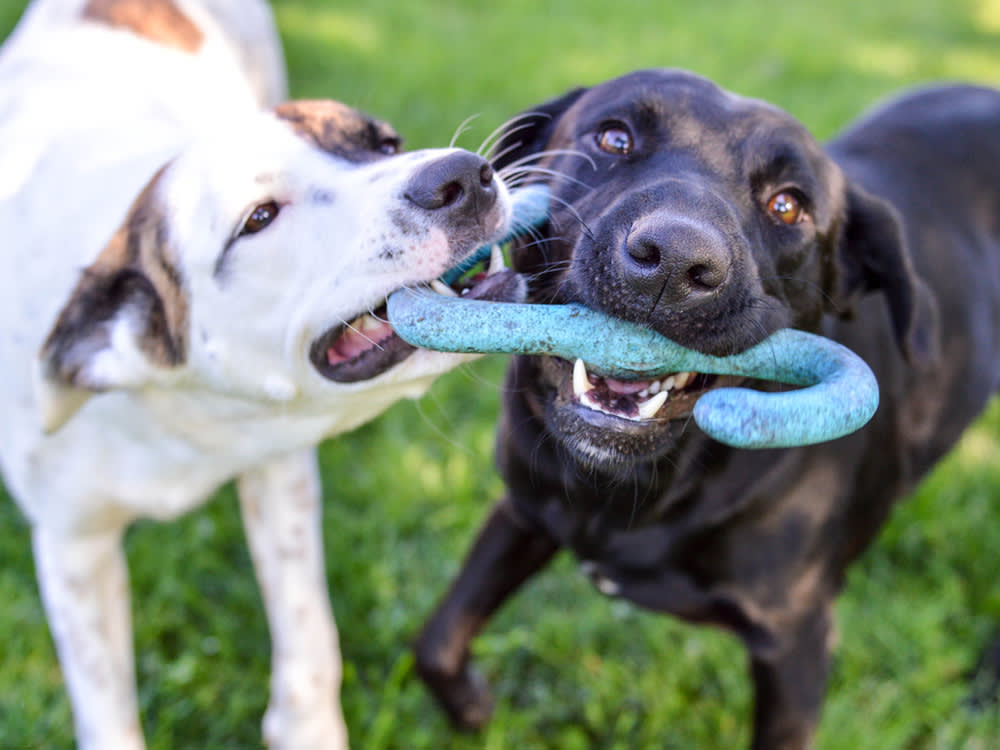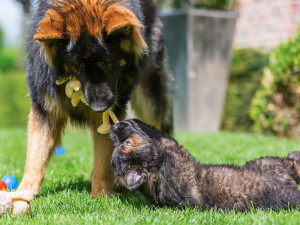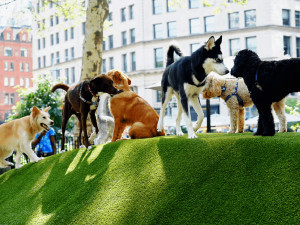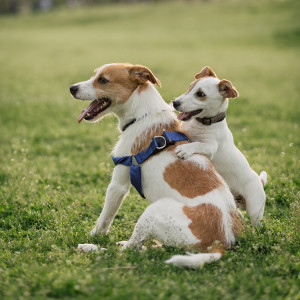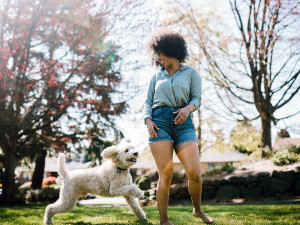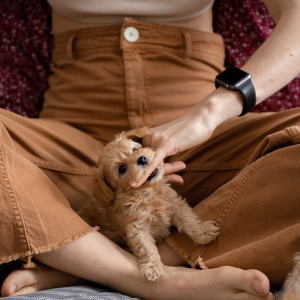How to Choose the Right Friend For Your Dog
7 signs your pup and their pal have BFF potential.
Much like with people, you can’t just put any two dogs together and expect them to strike up a friendship like they’re the main characters in Step Brothers (2008). Even if you think a pair of dogs would play great together, ultimately, the dogs will decide if they’re going to be BFFs — or just tolerate each other. That said, if you check off these seven compatibility points, the two pups could be doing the dog equivalent of turning their beds into bunk beds (“more room for activities!”) in no time.
1. Do they have compatible play styles?
Sure, most dogs love to play, but they may not play the same way. Some dogs love to play chase, running back and forth with one another endlessly, while others engage in rough-and-tumble wrestle play. Then, there are those more interested in playing stalking games. Some dogs are much calmer in their play, preferring to gently bat at each other with their paws or bounce around near each other, while others slam into one another, both while running or wrestling in place.
No one play style is any better than another, but the dogs need to be compatible. They don’t necessarily need to have the same favorite play style as long as there’s one they mutually enjoy. What you don’t want is one dog trying to play chase while the other dog is trying to wrestle. Play sessions only go well if the playmates are trying to play the same game and both are enjoying it.
2. Are their sizes a reasonable match?
Dogs certainly don’t have to be the same size to be great friends and play buddies, but there are some advantages to being in the same general range. When dogs are well-matched in size, there is less chance of injuries. It may also make it easier for the dogs to play without one having to take it easy on a much smaller play partner. Dogs who are similar in size can play without having to hold back.
How much do you spend on your pet per year?
That said, some of the best dog friends in the world are wildly different in size, with the bigger dog being an expert at matching the smaller dog’s level. It’s cute to watch a huge dog play with a small dog while lying down — as long as both dogs are having fun and not putting each other at risk.
3. How old are they?
Dogs don’t need to be the same age, or even close in age, to have a great time playing together, but age is still a consideration. Compatibility in exuberance, persistence, and energy levels is always a plus, and age influences those factors. The biggest issue with dogs of very different ages is that younger dogs often want to play much longer, even after an older dog has had enough. It’s not unusual for an old dog to be excited about playing — for a few minutes, at least.
Pairing a senior dog with a youngster who wants to play morning, noon, and night can lead to problems. At a minimum, the young dog may become sad and disappointed, perhaps even tentative about initiating future play with the older dog. Or worse, the younger dog may refuse to give up, upsetting the older dog, who may become aggressive in order to let the pesky, persistent younger dog know they’re being rude. Many pairs of dogs of mixed ages get along beautifully, but it’s essential to protect a senior from a youngster who won’t take no for an answer.
4. Do both pet parents have similar views about play?
A good play session between dogs isn’t just about the dogs; pet parents also play a role in its success. There are decisions to be made when dogs play together, and it’s best if both people feel the same way about them. Is it OK if treats are available? How about toys? Are both of you in agreement about what constitutes appropriate play? What sorts of behaviors by the dogs will prompt you (or them) to intervene and require the dogs to take a break? Will you both pay attention and monitor the play, or does the other person feel that ignoring the dogs is a better strategy? Or worse, do they think dogs need to “work it out themselves”?
5. Does the other dog play nicely?
Some dogs can play exuberantly and with great energy, but if both dogs are willing participants who are having a good time, that’s a good sign. If, on the other hand, your dog finds the other dog scary or overwhelming, that’s not OK. Dogs who are relentless, pushy, or rude are not playing nicely, and they don’t make the best play buddies. Even if your pup isn’t frightened, it makes sense to protect them from bad-mannered play. Not only can it lead to situations that are not fun, but it can also teach a dog that such behavior is an acceptable way to play.
6. Does the other dog have bad habits you don’t want your dog to pick up?
As social animals, dogs do learn from one another, including during play. Like children who act out after spending time with an unruly friend, dogs also pick up bad habits from other dogs. Such contagious behavior can include barking at passersby, running along a fence growling and lunging at a dog on the other side, digging, and howling. Sometimes, people are quick to assume that their young dog picked up an unfortunate behavior from a play buddy when the dog likely developed those behaviors on their own. But there’s no doubt that dogs can acquire unfortunate habits from other dogs, so choosing play buddies who don’t exhibit these behaviors is a wise idea.
7. Does your dog like the other dog?
Is the other dog one your dog is interested in and wants to play with? The heart wants what the heart wants, and one of the best reasons to choose a play buddy for your dog is that your dog loves the other dog. As long as there are no red flags, why not choose to have play dates with the dog that makes your dog the happiest and most eager to play?
Safety reminder:
Collars (and, to a lesser degree, harnesses) can be trouble for actively playing dogs. Teeth and buckles get caught or tags twist together, and before you know it, both dogs are freaking out — unable to separate. They can hurt themselves or the other dog in their struggle. You can reduce the risk by simply removing collars at playtime.
